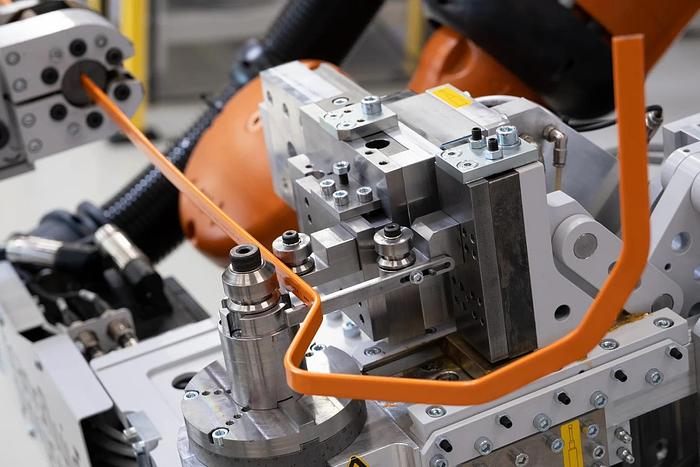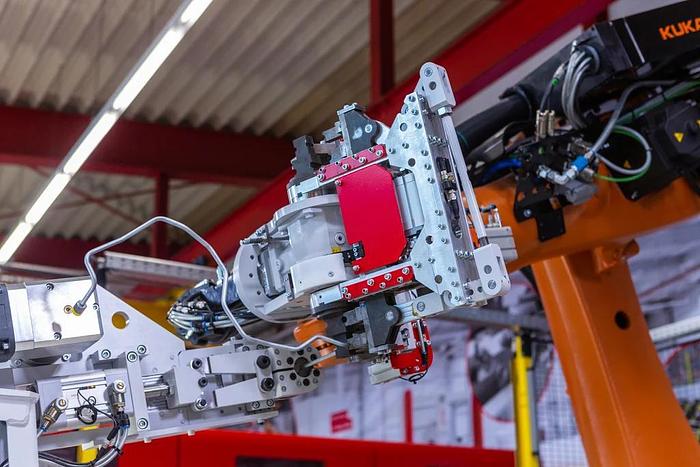Transfluid t bend Robotic Bending Technology

Transfluid t bend Robotic Bending Technology
Description
transfluid® ROBOTIC BENDING TECHNOLOGY Maximum bending freedom. The robotic bending technology combines the greatest versatility in manufacturing steps and simple handling. The robotic head is equipped with a clockwise and counterclockwise bending head, so that bending can happen in both direction once clamped. The eight synchronized and fully electric axes give maximum versatility when processing tubes. The bending process on tubes, including the processing at the ends and add-on component can be done without any problems. The add-on components can be positioned automatically, if needed. A radii/plane changer with up to 6 tools per bending system is integrated to give maximum flexibility. Machine sizes/tube sizes DB 622-ROBO-R/L 6-22 mm Ø T BEND - Robotic bending technology: Bending processes on tubes, as well as end processing and adding of components is an option
-Intuitive operation -Eight synchronized, fully electric axes -Handling included -Bending at every position Expanded processing, bigger output
The bending cells can be equipped with one or two integrated robotic bending units. With the innovation and development by transfluid, a production cell with two robotic bending machines can not only bend a tube in both directions, but each robot is also capable of processing a different geometry. The robot as a machine
A complementary concept of Transfluid's advanced 't motion' automation systems is the option to use the robot not only for handling, but as a machine. "In a recent project, we had to find a solution and decide whether to install a bending machine and automate it via a robot, or simply use the option of using a robot as a machine," says Stefanie Flaeper. To make that happen, Transfluid engineers simply put a bending machine in the robot's hand. This robotic bending machine is capable of right-left bending in a single clamping operation. And it is extremely flexible in doing so, especially when long tubes are to be bent - or, for example, tube-hose combinations where the hose has already been assembled before the bending process.A production with one or two robots and without a set-up process makes it possible to bend long pipes with almost no oscillations. Automated without tool changes and vibration-free
Because the bending heads can also be provided with several levels in this way, it is possible to process different tube diameters without changing tools. The advantage of such a robotic bending system is obvious: Long tubes can be bent automatically without major vibrations, and the bending speed is kept relatively constant over the entire length. The handling of the tubes from a magazine and the transfer to a deposit after processing is provided by the robot. This means that steel tubes up to 22 mm in diameter can be bent without mandrels. Robots also bend tubes that have already been processed
In addition to conventional bending methods, another process is already available for bending tubes with internal mandrels by robot. This is exciting if the workpieces have previously been machined on both sides, for example. The robot can then start bending from both sides. In this way, the Transfluid concept opens up the impressive possibility of bending on both sides to the final shape without additional length.
Specifications
| Manufacturer | Transfluid |
| Model | t bend Robotic Bending Technology |
| Condition | New |


